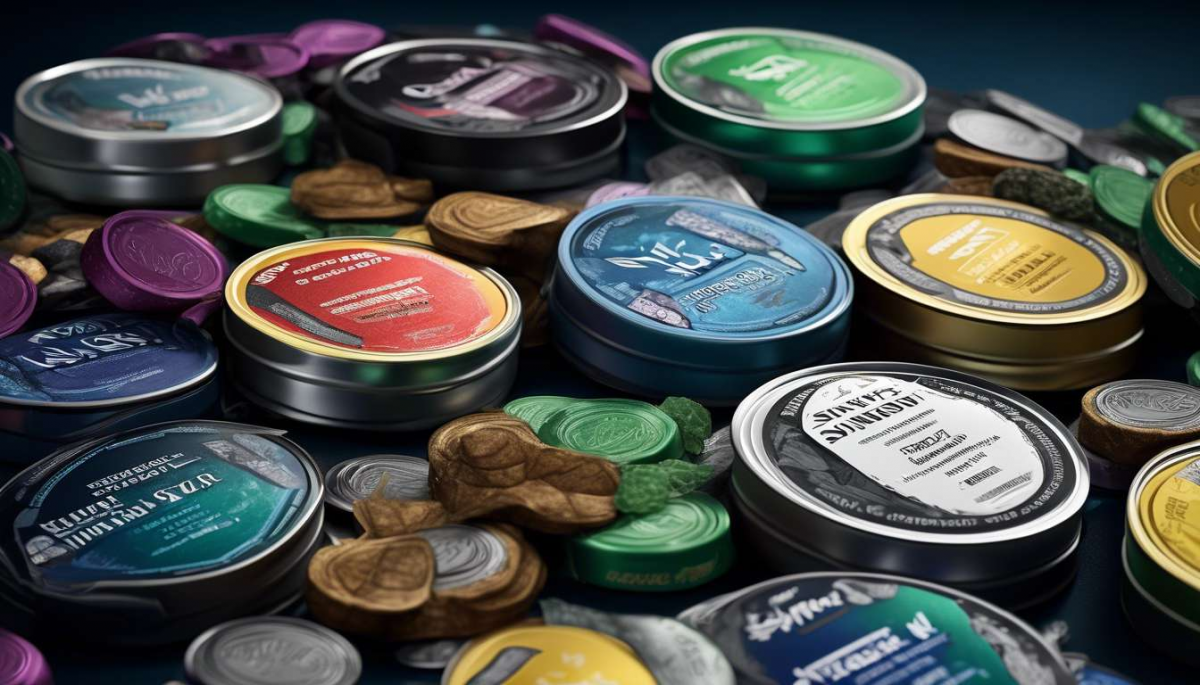Swedish snus, a moist powder tobacco product traditionally placed under the upper lip, has long been a staple in Scandinavian culture. Originating in Sweden in the late 18th century, its usage has spread across various countries, becoming particularly popular in regions with limited cigarette consumption.
Distinctive Production Process:
Unlike other tobacco products, snus undergoes a pasteurization process, which reduces the levels of harmful nitrosamines. This makes it distinct from commonly known smokeless tobacco.
Variety and Consumer Preferences:
Snus is available in a variety of flavors and strengths, catering to diverse consumer preferences.
Health Debate:
Despite its popularity, snus remains a subject of debate among health professionals and policymakers due to its nicotine content and potential health implications.
Purpose of the Article:
This article aims to explore:
- The cultural significance of snus.
- Health considerations associated with its use.
- The regulatory landscape surrounding Swedish snus.
The goal is to provide a comprehensive overview for those interested in understanding its role in modern society and its impact on public health.
For those looking to purchase snus online, Snusdirect offers a wide range of options to explore.
Cultural Significance
Swedish snus holds a significant place in the country’s cultural heritage, reflecting centuries-old traditions and social practices. Originating in the 18th century, snus has become an integral part of Swedish society, enjoyed across various social settings.
The use of snus transcends mere consumption; it embodies a sense of identity and community, connecting individuals to their heritage. This smokeless tobacco product offers a unique nicotine content, appealing to those seeking a specific experience.
Cultural Significance and Health Risks:
The cultural significance of snus is intertwined with the understanding of its associated health risks. These risks, while acknowledged, have not deterred its use, highlighting the deep-rooted acceptance within the community.
The controlled nicotine content in snus provides a distinct choice for users who value tradition and continuity in their cultural practices.
Enduring Presence and Cultural Identity:
Through its enduring presence, Swedish snus contributes to a shared cultural narrative, fostering a sense of belonging among users. Many view it as more than a product, but as a link to their cultural identity.
Health Considerations
Recent studies reveal diverse health implications associated with the use of Swedish snus, necessitating a thorough understanding of its potential effects. As a product deeply embedded in cultural heritage, Swedish snus carries both historical significance and health considerations.
Nicotine Content and Health Impact:
- The nicotine content in snus is a key factor in understanding its impact on health.
- Nicotine, a naturally occurring stimulant, contributes to health risks such as:
- Addiction
- Cardiovascular issues
Cultural Perceptions vs. Health Risks:
- The cultural heritage of Swedish snus often influences perceptions of its safety.
- Some users may believe that traditional products carry fewer health risks compared to other tobacco products.
- However, research indicates that while snus may present lower risks for certain smoking-related diseases, it is not without its own health concerns:
- Regular usage can lead to increased blood pressure.
- Potential oral health issues.
Balancing Tradition and Health:
- Understanding the balance between cultural heritage and health risks is essential for those who choose to use Swedish snus.
- Awareness and informed decision-making remain crucial for maintaining personal health while respecting tradition.
By considering both the cultural and health aspects, users can make more informed choices regarding Swedish snus.

Flavor and Strength Options
Swedish Snus Flavor and Strength Options
Swedish snus offers a variety of flavor and strength options, catering to diverse preferences and enhancing the user experience. These options reflect the cultural heritage of Sweden, where snus holds a significant place in social customs.
Flavor Options:
- Traditional flavors:
- Bergamot
- Juniper
- Modern innovations:
- Mint
- Berry
These flavors allow users to find a product that resonates with their taste preferences.
Nicotine Content:
The nicotine content in Swedish snus varies, providing choices that range from low to high strength. This diversity caters to:
- New users seeking milder experiences.
- Experienced users looking for a more robust experience.
Health Considerations:
While the availability of different strengths may appeal to various consumer needs, understanding the associated health risks is essential. Excessive nicotine intake can lead to adverse health effects, making it crucial for users to be informed about the potential implications of their choices.
Community and Cultural Significance:
Ultimately, the wide array of flavor and strength options available in Swedish snus contributes to a sense of community among users, aligning with shared cultural practices and individual preferences.

Regulatory Landscape
The regulatory landscape for Swedish snus is shaped by stringent guidelines and varies significantly across different countries.
In the European Union:
- Snus is banned except in Sweden.
- Sweden’s cultural heritage is recognized, allowing for its legal status.
- This distinction underscores the importance of cultural heritage in shaping regulatory decisions.
In contrast, in the United States:
- Snus is categorized as a tobacco product.
- It is subjected to oversight by the Food and Drug Administration (FDA).
- The FDA evaluates snus based on health risks, with a particular focus on:
- Potential impacts related to nicotine content.
- Consumption patterns.
Swedish authorities maintain strict regulations regarding the nicotine content of snus, ensuring consumer safety while preserving traditional practices. The balance between acknowledging cultural heritage and mitigating health risks remains a critical aspect of regulatory policies.
As global awareness of snus increases, regulatory frameworks continue to evolve, aiming to address both public health concerns and the preservation of cultural traditions. This dynamic landscape highlights the delicate interplay between regulation, health, and heritage.
